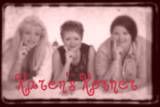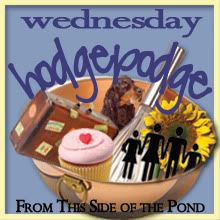Tuesday, March 30, 2010
The History of the Easter Egg, et al.
I decided that this week was going to be all about Easter. Thursday and Friday are easy. That is Maundy Thursday and Good Friday, but when my kids were small one of their favorite traditions from Easter would have to be the Easter egg hunt. We would boil, color, decorate and stuff (with candy and money) hundreds of eggs and all the grandkids would come and the men would hide the eggs in my father-in-laws pasture. Sometimes there would be hidden under a cow patty. You always hoped it was an old one that was dry. Occassionally a warped male would hide an egg in a not so dry cow patty....and it would remain there....no one would be brave enough to go after it. I am sure all of you that celebrate Easter have egg hunt tales you could share. Today, when I was looking at a fabrege egg at a local antique dealers I got to thinking...where did this tradition originate. Do you know? Well, I didn't....or if I did I had forgotten, so I went online to see. I found out that it's pretty much common knowledge that Easter is a Christian celebration of Christ's rising, but this holiday also has pagan origins. Where did the colored eggs, cute little bunnies, baby chicks, leg of lamb dinners, and lilies come from? It turns out that "they are all symbols of rebirth and the lamb was a traditional religious sacrifice. Easter falls in the spring, the yearly time of renewal, when the earth renews itself after a long, cold winter. The word Easter comes to us from the Norsemen's Eostur, Eastar, Ostara, and Ostar, and the pagan goddess Eostre, all of which involve the season of the growing sun and new birth. The Easter Bunny arose originally as a symbol of fertility, due to the rapid reproduction habits of the hare and rabbit. The ancient Egyptians, Persians, Phoenicians, and Hindus all believed the world began with an enormous egg, thus the egg as a symbol of new life has been around for eons. The particulars may vary, but most cultures around the world use the egg as a symbol of new life and rebirth. A notation in the household accounts of Edward I of England showed an expenditure of eighteen pence for 450 eggs to be gold-leafed and colored for Easter gifts. The first book to mention Easter eggs by name was written five hundred years ago. Yet, a North African tribe that had become Christian much earlier in time had a custom of coloring eggs at Easter. Long hard winters often meant little food, and a fresh egg for Easter was quite a prize. Later, Christians abstained from eating meat during the Lenten season prior to Easter. Easter was the first chance to enjoy eggs and meat after the long abstinence. Some European children go from house to house begging for Easter eggs, much like Halloween trick-or-treaters. Called pace-egging, it comes from the old word for Easter, Pasch. Many old cultures also attributed the egg with great healing powers. It is interesting to note that eggs play almost no part in the Easter celebrations of Mexico, South America, and Native American Indian cultures. Egg-rolling contests are a symbolic re-enactment of the rolling away of the stone from Christ's tomb." Fancy that! So...now you know the rest of the story. Hope it was as interesting to you as it was to me. Happy Tuesday. Six more days until my favorite holiday! Whoooo hoooo!
Subscribe to:
Post Comments (Atom)




















































1 comment:
Interesting; I had no idea! Thanks for sharing!
Post a Comment